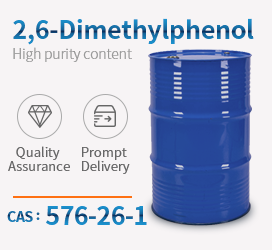Product Name:Calcium carbide
Molecular format:C2Ca
CAS No:75-20-7
Product molecular structure:

Calcium carbide (molecule formula: CaC2), is a kind of important chemical raw materials produced from the chemical processing of limestone. In 1892, H. Maysan (French) and H. Wilson (United state) simultaneously developed a calcium carbide production approach based on furnace Reduction. The United State had successfully achieved industrial production in 1895. The property of calcium carbide is related to its purity. Its industrial product is mostly the mixture of calcium carbide and calcium oxide, and also contains trace amounts of sulfur, phosphorus, nitrogen and other impurities. With the increasing content of impurities, it color exhibits gray, brown to black. The melting point and electrical conductivity both decrease with the decrease of the purity. The purity of its industrial product is usually 80% with m.p. being 1800~2000 °C. At room temperature, it does not react with air, but it can have oxidation reaction at above 350 ℃, and have reaction with nitrogen at 600~700 ℃ to generate calcium cyanamide. Calcium carbide, when coming across with water or steam, generates acetylene and release a large amount of heating. CaC2 + 2H2O─ → C2H2 + Ca (OH) 2 + 125185.32J, 1kg of pure calcium carbide can produce 366 L of acetylene 366l (15 ℃, 0.1MPa). Thereby, for its storage: calcium carbide should be strictly kept away from water. It is usually packed in a sealed iron container, and sometimes stored in a dry warehouse being filled with nitrogen if necessary.
Calcium carbide (CaC2) has a garlic-like odor and reacts with water to form acetylene gas plus calcium hydroxide and heat. In the past, it was used in miners’ lamps to continuously produce a small acetylene flame to provide some illumination in coal mines.
Calcium carbide is used as a desulfurizer, dehydrant of steel, fuel in steel making, powerful deoxidizer and as a source of acetylene gas. It is used as a starting material for the preparation of calcium cyanamide, ethylene, chloroprene rubber, acetic acid, dicyandiamide and cyanide acetate. It is used in carbide lamps, toy cannons such as the big-bang cannon and bamboo cannon. It is associated with calcium phosphide and used in floating, self-igniting naval signalCalcium carbide is the most relevant carbide industrially because of its important role as the basis of acetylene industry. In locations where there is shortage of petroleum, Calcium Carbide is used as the starting material for the production of acetylene (1 kg of carbide yields ~300 liters acetylene), which, in turn, can be used as a building block for a range of organic chemicals (e.g. vinyl acetate, acetaldehyde and acetic acid). In some locations, acetylene is also used to produce vinyl chloride, the raw material for the production of PVC.
A less important use of Calcium Carbide is related to the ferilizers industry. It reacts with nitrogen to form calcium cyanamide, which is the starting material for the production of cyanamide (CH2N2). Cyanamide is a common agricultural product used to stimulate early foliation.
Calcium Carbide can also be employed as desulfurizing agent for producing low-sulfur carbon steel. Also, it is used as a reducing agent to produce metals from their salts, e.g., for direct reduction of copper sulfide to metallic copper. flares. Further, it is involved in the reduction of copper sulfide to metallic copper.
Chemwin can provide a wide range of bulk hydrocarbons and chemical solvents for industrial customers. Before that, please read the following basic information about doing business with us:
1. Security
Safety is our top priority. In addition to providing customers with information about the safe and environmentally friendly use of our products, we are also committed to ensuring that the safety risks of employees and contractors are reduced to a reasonable and feasible minimum. Therefore, we require the customer to ensure that the appropriate unloading and storage safety standards are met before our delivery (please refer to the HSSE appendix in the general terms and conditions of sales below). Our HSSE experts can provide guidance on these standards.
2. Delivery method
Customers can order and deliver products from chemwin, or they can receive products from our manufacturing plant. The available modes of transport include truck, rail or multimodal transport (separate conditions apply).
In the case of customer requirements, we can specify the requirements of barges or tankers and apply special safety/review standards and requirements.
3. Minimum order quantity
If you purchase products from our website, the minimum order quantity is 30 tons.
4.Payment
The standard payment method is direct deduction within 30 days from the invoice.
5. Delivery documentation
The following documents are provided with each delivery:
· Bill of Lading, CMR Waybill or other relevant transport document
· Certificate of Analysis or Conformity (if required)
· HSSE-related documentation in line with regulations
· Customs documentation in line with regulations (if required)
Products categories
-

Phone
-

E-mail
-

Whatsapp
-

Top


















